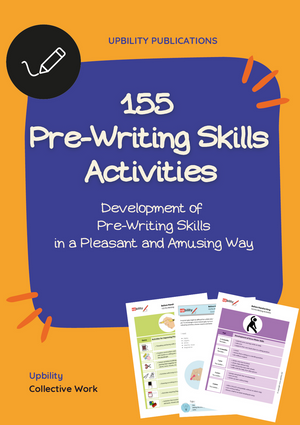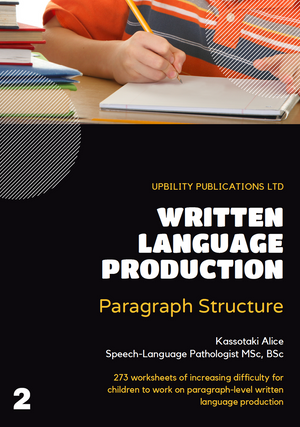
Music Therapy: Autism Through Different Eyes
The beneficial effects of music for children with autism spectrum disorder.
Autism
Autism is considered to be a complex disorder that presents along a spectrum of symptoms and behaviors of varying severity. It affects the development of the child’s social, verbal and cognitive abilities. Some of the characteristics of children in the autistic spectrum include deficits in communication and social skills, as they often fail to relate to others and share their feelings.
Autism and Music Therapy
Music therapy has often been linked to positive outcomes and progress in skill development for individuals diagnosed with autism spectrum disorders.
One of the reasons that music has quickly become a tool used in autism therapy is that it can stimulate both hemispheres of our brain, rather than just one. This means that a therapist can use a song or instrument to support cognitive activity so that we can build self-awareness and improve relationships with others. Music encourages communicative behavior and can encourage interaction with others, which is something that autistic children have great difficulty with. If we look closely at the way that a band works, it is obvious that the instruments must all interact with one another, but the player only needs to interact with the instrument at first. For children dealing with autism, interacting with others can be difficult, but through introducing an instrument to their therapy, they may bond first with the object and then open up to others interacting with their instruments as well.
Why music therapy?
Studies have shown that music therapy used with children and teens with autism can improve social behaviors, increase focus and attention, increase communication attempts (vocalizations, verbalizations, gestures, and vocabulary), reduce anxiety, and improve body awareness and coordination. Many additional studies have found that children and adults with autism spectrum disorders respond well to music when little else is able to get their attention, which makes music a potential therapeutic tool.
Interpretation of music, both in lyrics and in sound, can greatly assist in teaching people to communicate. For children with autism, this could mean learning a new word from a song, or better understanding how to act in a social situation based on the messages that a song is expressing. We know that autism can create barriers for children in social settings, but small groups of children listening to music together may feel confident and comfortable enough to comment or sing along with others.
The reason that music therapy is used is to help autistic children learn to relate not only to the music therapists, but also to others; other family members may be invited to participate after children become accustomed to one on one sessions. Aside from the sensory of dance, verbal advancement of lyrics and the social dynamic of learning an instrument, rhythm can help to motivate impulsive play time that involves our entire brains and body as one.
How does music therapy help autism?
Music therapy can improve the quality of life for people with conditions on the Autistic Spectrum and offer a number of benefits:
Music is Multi-Sensory
Many children diagnosed with autism spectrum disorders have complex sensory needs and may constantly be sensory seeking input in the form of self-stimulating behaviors. Use of music therapy interventions can help to reduce undesired behaviors and increase more appropriate responses. With many music experiences, the child receives auditory, visual, and tactile input in one place. As this can often be helpful, we must also keep in mind that some children are easily overwhelmed by too much sensory input. Luckily, music is flexible and adaptable and can be easily changed to fit the needs of each child.
Music is Processed in the Whole Brain
Studies have shown that music is not just recognized by the brain on the left or right side. When engaged in music activities, the whole brain is used. Just listening to music activates neural networks responsible for emotions, creativity, and motor control.
Music Provides Structure
Musical elements and structure can create a sense of security and familiarity. It is often helpful for individuals with autism spectrum disorders to know what is coming next. The very act of engaging in a musical environment seems to reduce the anxiety associated with transitions and new activities. For children who are very dependent on repetition of the same activities, new songs and music experiences can be slowly introduced while keeping most of the expected music routine the same.
Music can improve communication
Up to 30% of children with autism are nonverbal, and many low-functioning children have difficulty following verbal commands and have a difficult time with social awareness like understanding body language. Music experiences provide a means of self-expression that does not require using words. During improvisational piano play and drumming, the child can express anger, sadness, happiness, excitement, etc.
For other children, music therapy interventions can also help further develop existing language in various ways. Music strategies can be used to help children learn to expressively and receptively label items or pictures, use carrier phrases, increase comprehension, and develop conversational skills to name a few.
Music is thought to improve the mapping of sounds to actions, by connecting the auditory and motor sections of the brain, which may help improve understanding of verbal commands. By pairing music with actions, and with repetitive training, the brain pathways needed to speak can be reinforced and improved.
Music encourages social interactions
Children with autism have been found to show more emotional expression and social engagement during music therapy sessions than in play sessions without music. These children also responded to the therapist’s requests more frequently during music therapy than in play sessions without music.
Additionally, a skilled therapist can use music with children to increase their social interaction and improve social skills. Passing and sharing instruments, music and movement games, gathering around a central instrument, learning to listen and singing of greetings are just a few of the ways music therapy sessions can increase interaction. Basic social skills, such as turn-taking, eye contact, waiting, listening and active participation are improved and interactive play is encouraged, making it easier for the children to establish relationships and peer interactions.
Music can reduce anxiety
Children with autism are more sensitive to anxiety than the average child, as they are unable to filter out provoking stimuli. A small four-week study, conducted at the University of Wisconsin La Crosse in 2006, found preliminary success in reducing anxiety in patients with autism through music therapy. After 16 short, 20-minute sessions, during which the treatment patients listened to rhythmic music, the participants who received the therapy appeared to have decreased anxiety-related behaviors. Classical music or music with a steady rhythm is thought to be the best for alleviating anxiety in children with autism due to the predictability of the beat.
Music Therapy can address Motor, Cognitive, and Social Skills
Children on the autistic spectrum usually struggle with learning letters, numbers, or colors and improving gross or fine motor skills. Music therapy can address multiple domains including communication, motor, cognitive, and social skills. Music therapists do not diagnose but are able to effectively create music strategies to help develop targeted skills.
Upbility team
Keep Reading:
- Teaching Empathy Skills to Children With Autism
- Teaching Students with ADHD: Strategies for an effective lesson
- Are Autistic Girls Overlooked?
- Music Therapy: Autism Through Different Eyes
- 7 Key Social Skills to Help Children with Autism Cope with Bullying
- The Impacts Of Distance Learning A Review
- Consequences of poor processing speed
- Back to School: Making it Easier for Students With Learning Disabilities
http://www.cochrane.org/CD004381/BEHAV_music-therapy-people-autism-spectrum-disorder
https://autismsciencefoundation.wordpress.com/2013/08/30/music-therapy-may-help-children-with-autism/
http://nursejournal.org/community/the-benefits-of-music-therapy-for-autistic-children/
https://www.musictherapykids.com/how-does-music-therapy-help-autism/
http://www.mtcni.co.uk/music-therapy-and-autism/


